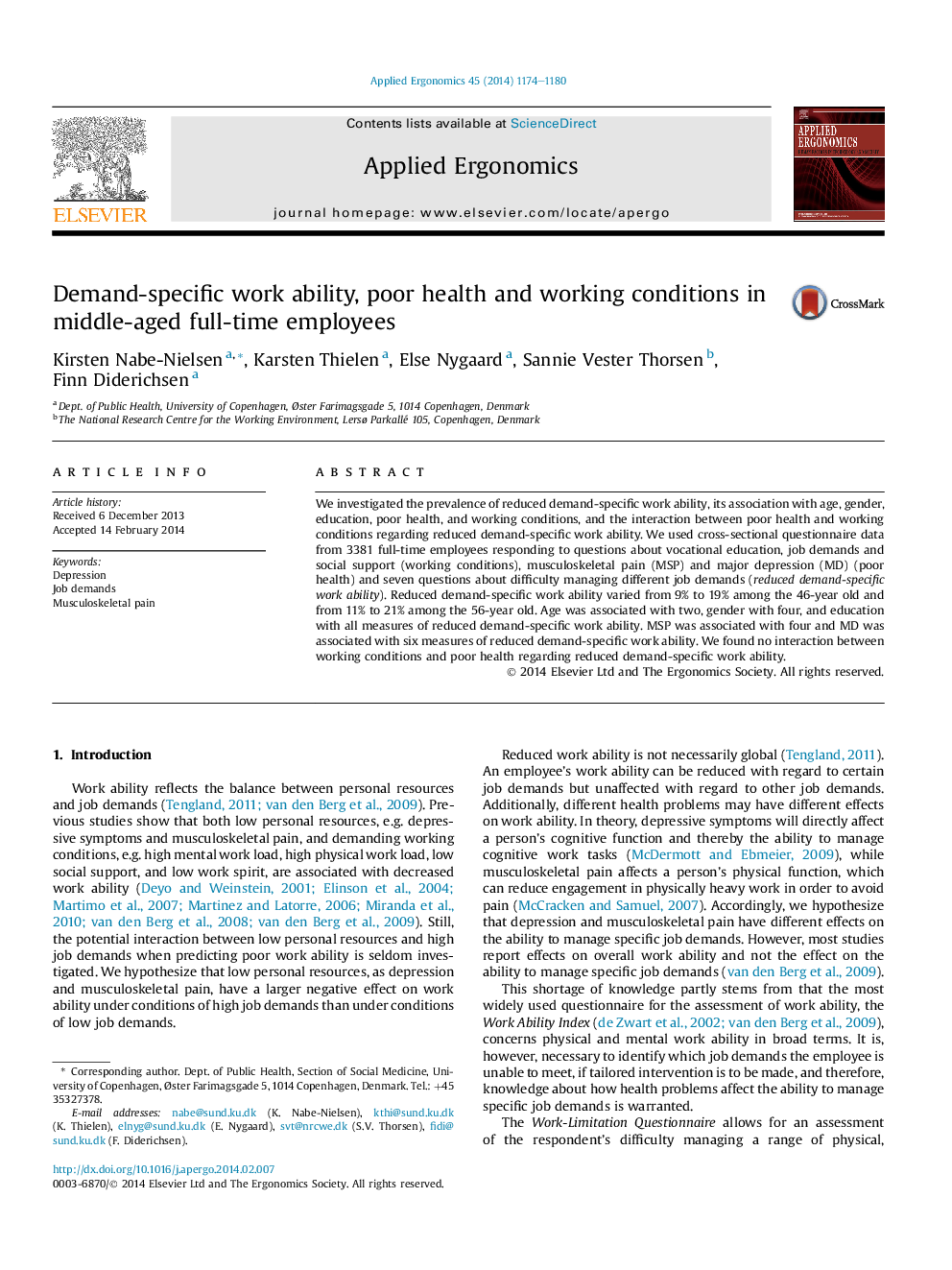| Article ID | Journal | Published Year | Pages | File Type |
|---|---|---|---|---|
| 10365907 | Applied Ergonomics | 2014 | 7 Pages |
Abstract
We investigated the prevalence of reduced demand-specific work ability, its association with age, gender, education, poor health, and working conditions, and the interaction between poor health and working conditions regarding reduced demand-specific work ability. We used cross-sectional questionnaire data from 3381 full-time employees responding to questions about vocational education, job demands and social support (working conditions), musculoskeletal pain (MSP) and major depression (MD) (poor health) and seven questions about difficulty managing different job demands (reduced demand-specific work ability). Reduced demand-specific work ability varied from 9% to 19% among the 46-year old and from 11% to 21% among the 56-year old. Age was associated with two, gender with four, and education with all measures of reduced demand-specific work ability. MSP was associated with four and MD was associated with six measures of reduced demand-specific work ability. We found no interaction between working conditions and poor health regarding reduced demand-specific work ability.
Related Topics
Physical Sciences and Engineering
Computer Science
Human-Computer Interaction
Authors
Kirsten Nabe-Nielsen, Karsten Thielen, Else Nygaard, Sannie Vester Thorsen, Finn Diderichsen,
